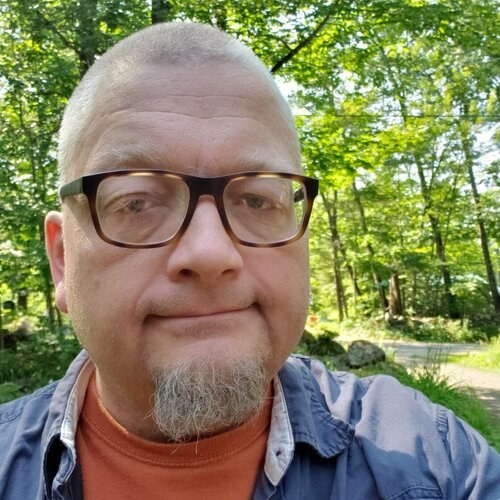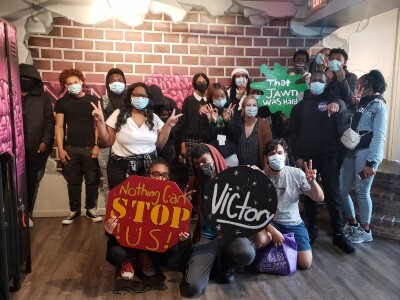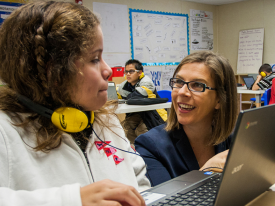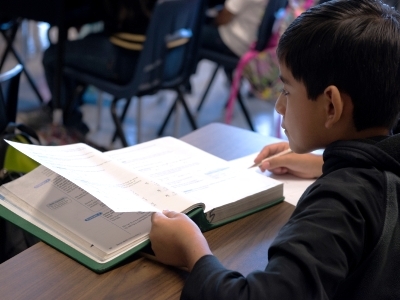Interrogating Resilience
Topics
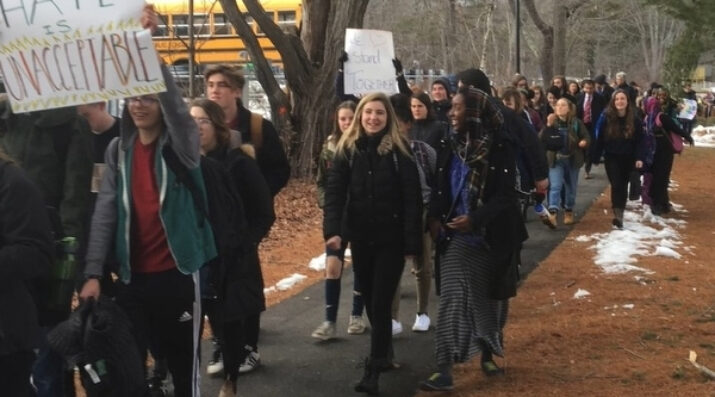
Together, educators are doing the reimagining and reinvention work necessary to make true educational equity possible. Student-centered learning advances equity when it values social and emotional growth alongside academic achievement, takes a cultural lens on strengths and competencies, and equips students with the power and skills to address injustice in their schools and communities.
Resilience is a function of community, not something struggling youth need to tap into on their own in order to survive school.
Just so we’re clear: I’m not going to say resilience is a bad thing, or a thing you don’t want to be, or a thing we don’t want our kids to be. There’s no plot twist at the end of this piece. I’m saying I was, at one point, suspicious when—in a world-wide pandemic during which our country seems to be exploring the virtues of indifference and incompetence—the word “resilience” found itself on everyone’s lips. Two weeks ago, in her excellent piece on trauma and resilience, Kate Gaskill wrote about “education buzzwords that lined the pockets of the latest-and-greatest for-profit pop-education speaker.” She was talking about things like “self-paced” and “mastery learning.” She was writing about resilience, and I was wondering: is the word “resilience” one of those buzzwords?
Does this sound familiar? When things get hard, or more is asked of everyone, we hear, “Work smarter, not harder.” I was around when “grit” was the trending theme, and—whatever the value of Duckworth’s writing—it became yet another quality that “struggling kids” (i.e., Black and Brown kids, poor kids, divergent, etc.) lacked and needed to have their “capacity” boosted in. In other words, it was something we could blame them for. It was something about them that needed changing, not something about us.
But the term “resilience” kept at me. Something resonated. It was out of reach. I walked with it a while. Then the This is Our Chance Film Festival began. This virtual festival has curated a series of films that explore “the intersection of race, education, and youth empowerment.” They program larger films, such as Ava DuVernay’s scathing 13th and the wonderful, emotion-churning, thought-provoking American Promise, and also many brilliant short pieces.
Walking in Solidarity by EL Education
One of those short films, Walking in Solidarity, tells the story of a recent incident when two Black boys were verbally and physically attacked by a racist while standing at a bus stop in Portland, Maine (an hour from my home). They were students at Casco Bay High School, a diverse school with a strong social justice tradition. The film—in four and a half minutes—tells the story, so I won’t, but in reflection one student, Farhiyo, a junior, said, “the incident showed us how resilient we could be in the face of the adversity … We could have chosen the other side. We could have chosen to be negative negative negative, but instead we decided to walk peacefully in solidarity.” And there it was.
Resilience is a function of community. If you think resilience lives only in the individual you’re talking about something else.
The concept of resilience outside the context of a community is incoherent. In Casco Bay the kids and teachers and admin tapped into talking about solidarity within a community, strength within a community. They were talking about the resilience of us. Not to say that an individual can’t have a form of resilience, but if a kid needs to tap into that kind of resilience on their own, in order to survive or get through, then that means we as a society have utterly failed that kid. This, indeed, is what Kate Gaskill describes. The pathway out of trauma, for the kids, is traveled with the teachers, friends, and parents—community, relationships, and “unconditional love.” That’s what Farhiyo is describing when she describes “how resilient we could be.”
Okay, color me convinced.
And … if resilience is a thing you (educators, parents, everyone) want more of, how do you do that? How do you figure out how you’re doing in the “Building Resilience Project”? You can’t talk about resilient kids without talking about resilient schools and resilient communities. Casco Bay High School is a resilient school because of the relationships and connections and conversations that happen within its walls. How do we know this? How do we—if I may—assess this?
Well, not by testing the kids. Instead, ask the question, “If this were a resilient community, what would we see/hear/feel happening? What would be the evidence of that?” And then look for those things in the community. I think of this as the Jane Goodall Assessment Method—observational, non-invasive, non-extractive, truthful, authentic, and kind. Maybe it involves conversations and relationships. This is happening in a number of places, such as the Nā Hopena A‘o (“HĀ”) initiative at the Hawai‘i Department of Education (DOE). HĀ (which means breath) is an intensely place-based framework for education communities that looks at six central characteristics: Belonging, Responsibility, Excellence, Aloha, Total well-being, and Hawai‘i. In this framework, the idea is that every kid feels a sense of, for example, belonging (“the relationship that cannot be undone”), and that this characteristic is a function of the community and it is the community that is accountable for it. I mention Hawai‘i as just one example because it gives me hope to see these ideas being embodied. If we are to build classrooms “grounded in unconditional love” (again Gaskill) then the ecosystem around those classrooms needs to be a place where it’s possible for that to happen. I mention Hawai‘i also because all of their work, even within the traditional DOE structure, is an invitation, not a command. And in that spirit, I invite you to consider your feelings about resilience. Resilience in kids? Resilience in teachers? Resilience in systems and communities? Has it changed or become sharper since March? Let us know. On Twitter, we can be found at @GaryChapin67 or at #forgood2020.
Image at top: Screenshot from EL Education short film, Walking in Solidarity.

